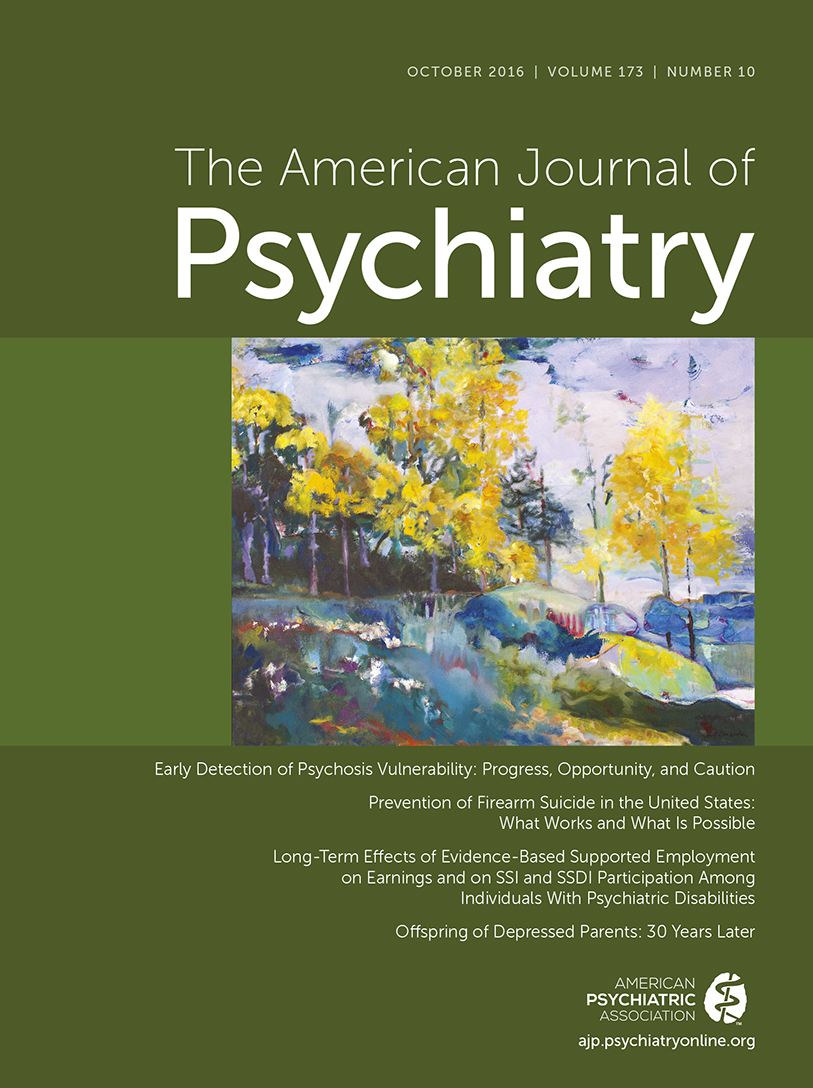An Individualized Risk Calculator for Research in Prodromal Psychosis
Abstract
Objective:
Approximately 20%–35% of individuals 12–35 years old who meet criteria for a prodromal risk syndrome convert to psychosis within 2 years. However, this estimate ignores the fact that clinical high-risk cases vary considerably in risk. The authors sought to create a risk calculator, based on profiles of risk indicators, that can ascertain the probability of conversion to psychosis in individual patients.
Method:
The study subjects were 596 clinical high-risk participants from the second phase of the North American Prodrome Longitudinal Study who were followed up to the time of conversion to psychosis or last contact (up to 2 years). The predictors examined were limited to those that are supported by previous studies and are readily obtainable in general clinical settings. Time-to-event regression was used to build a multivariate model predicting conversion, with internal validation using 1,000 bootstrap resamples.
Results:
The 2-year probability of conversion to psychosis was 16%. Higher levels of unusual thought content and suspiciousness, greater decline in social functioning, lower verbal learning and memory performance, slower speed of processing, and younger age at baseline each contributed to individual risk for psychosis. Stressful life events, trauma, and family history of schizophrenia were not significant predictors. The multivariate model achieved a concordance index of 0.71 and, as reported in an article by Carrión et al., published concurrently with this one, was validated in an independent external data set. The results are instantiated in a web-based risk prediction tool envisioned to be most useful in research protocols involving the psychosis prodrome.
Conclusions:
A risk calculator comparable in accuracy to those for cardiovascular disease and cancer is available to predict individualized conversion risks in newly ascertained clinical high-risk cases. Given that the risk calculator can be validly applied only for patients who screen positive on the Structured Clinical Interview for Psychosis Risk Syndromes, which requires training to administer, its most immediate uses will be in research on psychosis risk factors and in research-driven clinical (prevention) trials.



